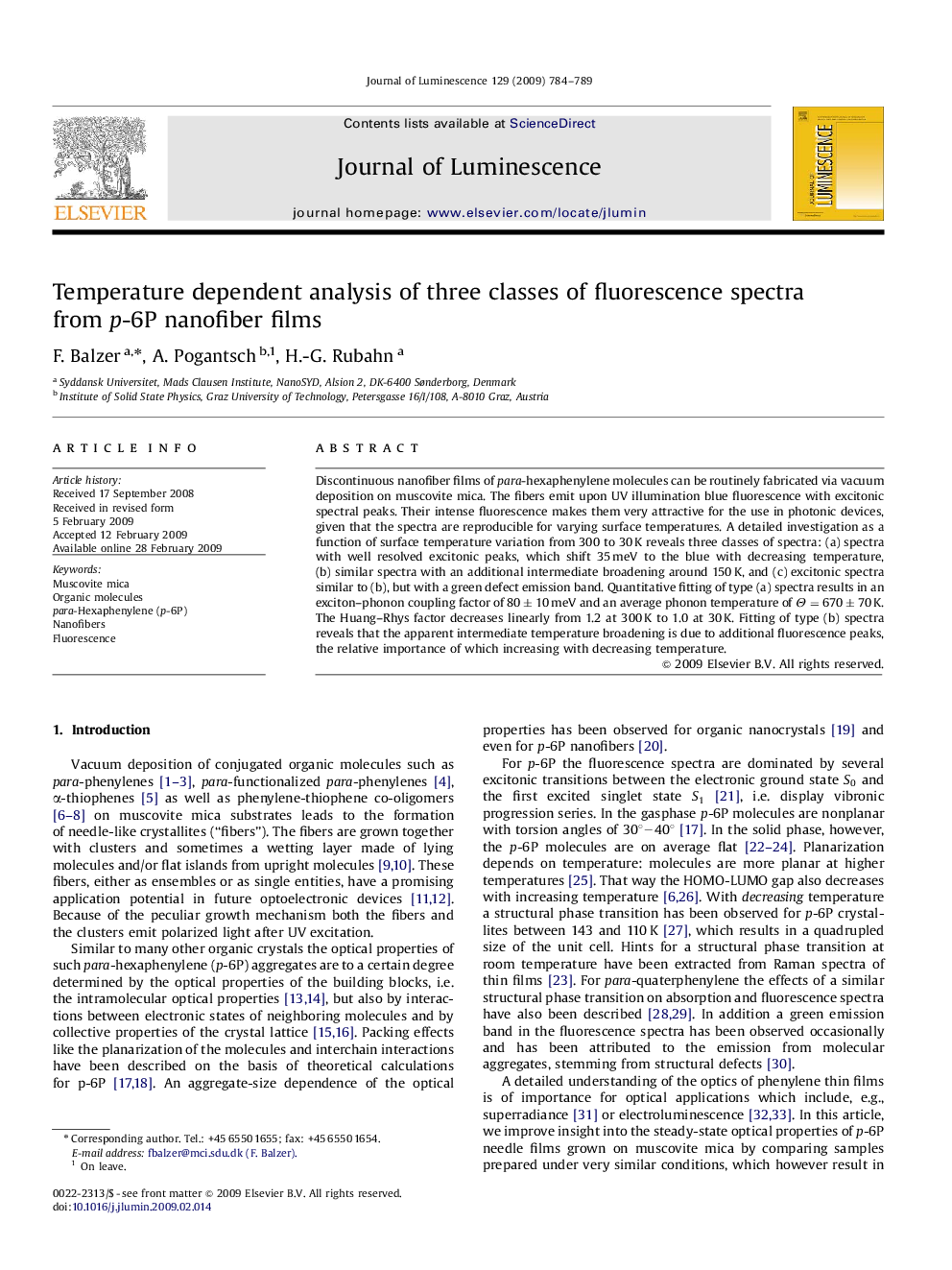| Article ID | Journal | Published Year | Pages | File Type |
|---|---|---|---|---|
| 5403069 | Journal of Luminescence | 2009 | 6 Pages |
Abstract
Discontinuous nanofiber films of para-hexaphenylene molecules can be routinely fabricated via vacuum deposition on muscovite mica. The fibers emit upon UV illumination blue fluorescence with excitonic spectral peaks. Their intense fluorescence makes them very attractive for the use in photonic devices, given that the spectra are reproducible for varying surface temperatures. A detailed investigation as a function of surface temperature variation from 300 to 30 K reveals three classes of spectra: (a) spectra with well resolved excitonic peaks, which shift 35 meV to the blue with decreasing temperature, (b) similar spectra with an additional intermediate broadening around 150 K, and (c) excitonic spectra similar to (b), but with a green defect emission band. Quantitative fitting of type (a) spectra results in an exciton-phonon coupling factor of 80±10meV and an average phonon temperature of Î=670±70K. The Huang-Rhys factor decreases linearly from 1.2 at 300 K to 1.0 at 30 K. Fitting of type (b) spectra reveals that the apparent intermediate temperature broadening is due to additional fluorescence peaks, the relative importance of which increasing with decreasing temperature.
Related Topics
Physical Sciences and Engineering
Chemistry
Physical and Theoretical Chemistry
Authors
F. Balzer, A. Pogantsch, H.-G. Rubahn,
